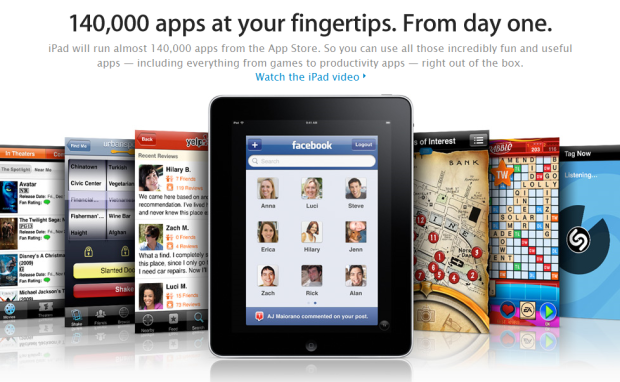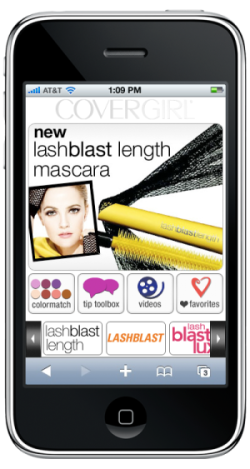
Suddenly, Apple’s $275 million acquisition of mobile ad company Quattro Wireless makes even more sense than it already did when the deal was announced earlier this year.
Early adopters who will be among the first to unbox and fire up an Apple iPad in a couple of months, will have nearly 140,000 applications readily available from the App Store right out the gate. That’s the approximate number of applications that are currently offered for free or for a fixed fee on the iPhone / iPod Touch App Store, which will soon be known only as the App Store (or under an entirely different moniker, though unlikely).
This is, in my opinion at least, one of the key benefits of being one of those early adopters: they won’t have to wait for developers to get acquainted with an entirely new SDK first, nor will they have to wait for them to build and get Apple’s approval for the apps they want to publish. Just in case you forgot: more than 3 billion apps have been downloaded from the App Store onto devices since its debut. Thriving, the platform is, as Yoda would put it.
And as WSJ’s Walt Mossberg put it: it happens to be all about the software here.
You’ll be able to run most iPhone apps on the iPad, either with pixel-for-pixel accuracy in a centered black box, or pixel-double running in full-screen. That also implies that in some cases you’ll be seeing mobile advertising units with pixel-for-pixel accuracy or pixel-double running in full-screen. Bigger ads that feel more ‘natural’ than on smaller-size screens, in other words, which undoubtedly means more revenue from in-app display advertising, not to mention an almost certain increase of in-app purchases in most cases.
 It also speaks volumes that former Quattro Wireless CEO Andy Miller was named VP of Mobile Advertising at Apple, an entirely new position for the company, and that in this new role he will be reporting directly to chief executive Steve Jobs.
It also speaks volumes that former Quattro Wireless CEO Andy Miller was named VP of Mobile Advertising at Apple, an entirely new position for the company, and that in this new role he will be reporting directly to chief executive Steve Jobs.
During the latest Apple earnings call, the company made it clear that they did not step into the mobile advertising game as an afterthought, and that they want developers to make money off their apps through advertising with a network they own and control, too.
Meaning, Apple will not let Google / AdMob and third-party mobile advertising players run the show. Owning Quattro, Apple has picked up another moneymaker from the App Store goldrush it has itself unleased, and the iPad will only reinforce that situation.
In my view, the purchase of Quattro Wireless was always about advancing the hit rate of in-app advertising rather than the monetization of websites viewed on the iPhone or iPad browser anyway.
An estimated 75% to 80% of all apps published on the App Store are free and thus has its makers relying heavily on advertising and in-app purchases of premium apps in order to profit from their work.
The same will likely be true on the iPad, but the extra screen real estate gives publishers and ad networks a lot more leverage. And conveniently, Apple is now in a position where it controls both the development environment, the hardware apps run on, the distribution and purchasing platform, as well as a powerful mobile advertising network developers can tap in order to grow their returns on development and marketing investments.
Advertisers spent just $416 million on mobile ads in 2009, compared with $22 billion on Web sites, according to eMarketer, but mobile ad spending is expected to grow to $1.6 billion by 2013. Apple clearly wants a significant piece of that pie, and it already has a lot of what it takes to get just that in place.
I’m convinced that in a few years, the purchase of Quattro Wireless will prove to be one of the key acquisitions Apple has made since its inception.